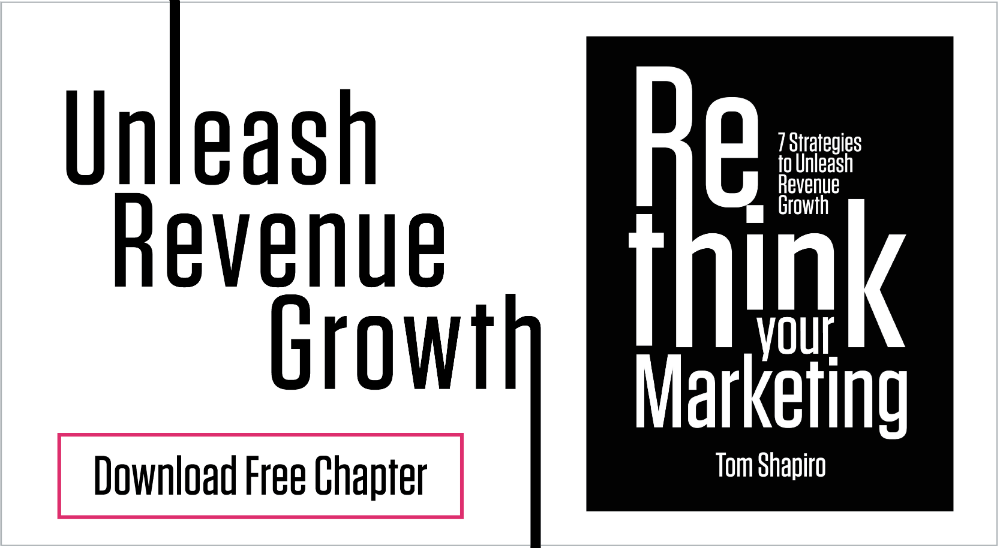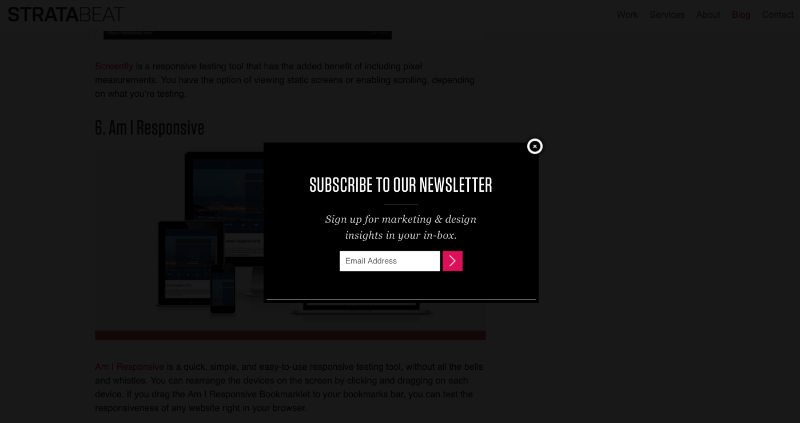Transforming Your Blog Into a Lead Generation Engine

Blogging ROCKS! It not only enables your brand to provide useful guidance to your audience, but it also can act as a serious traffic-driver and lead generation engine for your business.
When executed the right way, blogging gets results. According to HubSpot:
- 53% of marketers say blog content creation is their top inbound marketing priority.
- Marketers who have prioritized blogging are 13X more likely to enjoy positive ROI.
- B2B marketers using blogs generate 67% more leads than those that do not blog.
There are plenty of examples of companies that have experienced explosive traffic and leads growth through blogging, ranging from Drift to Zapier, Help Scout, Buffer, and Kinsta.
Read on to uncover 23 useful techniques for transforming your blog into a high-revving lead generation engine.
Test Blog Headlines
According to Copyblogger, only 20% of blog visitors click through the headlines to read the actual posts. If 80% of the visitors to your blog are not clicking through on your blog headlines, this is obviously a lost lead-generation opportunity for your company.
To correct this and drive more click-throughs, take the time to craft highly compelling post headlines. Try brainstorming at least 25-35 different variations for high-priority posts before you settle on what you feel is the best headline. You can even test different headlines using software such as VWO, Optimizely, Convert, and Google Optimize, running A/B tests to uncover winning headlines.
Write About the Challenges Facing Your Clients
One of the best ways to generate leads through your blog is to write specifically about the very things that keep your prospective clients up at night.
- What are their most frustrating challenges?
- What advice can you provide them to help them overcome their problems?
- How can you deliver as much value as possible?
Map each post to one of your audience personas, and think through their state of mind and psychology as they arrive at your blog post. What specifically made them click? What are they expecting to gain by reading the post? Then go ahead and thrill them in empowering them to solve one of their most frustrating problems.
Use IP Detection
Getting traffic to your blog is good. Knowing the specific companies on your site and the specific navigational paths for those visitors is great. When B2B blogging, that’s what IP Detection can do for you.
Once you know the companies that are on your website and you see the specific pages and time-on-page for each visit, you are armed with invaluable information to reach out to relevant titles at the company to offer additional value on such topics. Real-time alerts based on defined behaviors make IP detection even more useful. IP detection software packages include Leadfeeder, Lead Forensics, and WhoIs. To uncover individuals’ names and contact information, turn to LiftCertain. More robust all-in-one solutions such as HubSpot, Act-On, and SharpSpring can also identify specific individuals already in your database.
Using the combination of IP detection and behavioral intelligence alone to secure new leads from our blog, Stratabeat has generated seven figures in incremental revenue. I’m often surprised to see so many B2B businesses still not making use of IP detection, as it’s one of the most effective lead generation tools available.
Offer the First Step
When you’re on a SaaS site, you’re often given the opportunity to sign up for a free trial. Similarly, it’s often effective to offer the first step to a process right from your blog. For example, I offer a complimentary download of the first chapter of my book, Rethink Your Marketing: 7 Strategies to Unleash Revenue Growth, in my book microsite. We even have the same offer as a value-add in certain blog posts here in the Stratabeat blog (see below).
Offer Related Content
If someone is taking the time to read your blog content, this indicates that they are interested in learning about a specific topic. It’s with this in mind that you should offer them related posts or other content with a single click so that they can dive deeper into the topic and get more value out of your blog. To that end, offer options for related posts or other types of content in each post you publish. The more hooked they become on your content, the greater the likelihood that they become a lead.
Offer Deeper Content
If someone reads a blog post, they are clearly interested in the topic. You can deepen engagement by offering a deeper-dive into the topic through an opt-in form. For example, this might be as simple as a whitepaper or checklist, or something more involved like a video series or online course.
Include a Behavior-Based CTA
Stratabeat is continually testing different types of behavioral triggers for our CTAs. With one of our tests, if a first-time reader of our blog scrolled down towards to the bottom of the post, we displayed a pop-up asking the reader to opt in to our mailing list. It’s logical. If they are finding enough value to keep scrolling and scrolling down the page, then they would probably find value in our newsletter and other mailings.
In this way, behaviorally-based calls-to-action (CTA) can be very effective. When Stratabeat instituted that initial behaviorally-based popup in our blog, opt-ins increased by more than 300%.
Include a CTA Banner
Beyond behaviorally-based CTAs, you can also include static CTA banners. Stratabeat has been doing this for years in our blog, whether promoting our B2B marketing workshops, Rethink Your Marketing book, special offering, etc. Just as publishers often include advertising on the page, it makes sense to capitalize on the real estate on the page to drive additional results.
Include an Inline CTA Offer
Instead of a pop-up or outside of the main content on the page, another option is to include a CTA within the body copy itself. Hit them where their eyes are already focused. Use an inline form for even greater lead generation value. And mix it up. Use both visual CTAs as well as text-based CTAs. The variety will keep them reading your CTAs as they scroll down the page.
Here’s an example of an inline CTA that we use in various posts around our blog in promotion of our B2B blogging playbook, “High-Performance B2B Blogging”:
Turn Links into Opt-in Offers
Similar to an inline CTA offer, you can turn any inline link into a lead generation opportunity. Using conversion optimization technology such as from OptinMonster or WisePops, configure a text link so that it triggers an opt-in form. According to OptinMonster, this technique has driven an increase in site conversion rates of up to 785%.
Implement Behavioral Analytics
When analyzing Google Analytics or other web analytics data for a post, you’re looking at high-level results for the page as a whole. To gain deeper, more valuable insights, use behavioral analytics. You’ll uncover not only where your site visitors are from and where they go in your site, but also what they do specifically within each page. Discover exactly where site visitors are spending the most time, moving their cursor, and clicking. See exactly how far down the page they are scrolling. View actual recordings of their sessions through your website. Based on this data, you’ll be able to make pinpoint adjustments to drive conversion rates higher.
Another benefit of behavioral analytics is the ability to see how visitors are interacting with your forms. The technology can measure drop-offs, errors, blank submissions, and more for each form field.
Behavioral analytics software options include Mouseflow, Fullstory, and Hotjar. Enterprise options include Decibel and Contentsquare.
Drive Greater Traffic and Leads through Your Blog
Leverage Web Analytics More Effectively
Instead of viewing your web analytics in aggregate, segment the data for greater insights. One often overlooked filtering technique is to analyze your site data by country or region or city. Another filtering technique is to analyze your data by the source. You can also analyze the data for only the most engaged visitors. The point is, you’ll gain greater insights by segmenting your data rather than looking at it in the aggregate.
Add a Subscription Opt-in
If you are investing the time in a blog, the incorporation of a subscription registration box is low-hanging fruit. People who are interested enough in signing up for more of your content have already self-identified themselves as an appropriate target audience for your company, and so it behooves you to make it easy for them to consume your content and increase their touchpoints with your brand.
Include a Survey
To drive greater engagement, try including a quick, contextually relevant inline survey in some of your posts. Make it optional to include their email address. You’d be surprised how many site visitors are willing and interested in making their voice heard.
And here’s where most marketing teams get it wrong. When launching a survey, they will typically launch only one survey at a time. But you’ll 10X the value of your surveys if you launch five to 10 concurrently. The key is to hypertarget the audience so that the survey is contextually relevant and so you get responses from most qualified audience segment. For example, if Stratabeat conducts a survey in SEO posts in our blog, the survey is placed in posts specifically about SEO. If the survey is about blogging, then it’s placed in posts specifically about blogging or content marketing. Etc.
Include Relevant Links to Your Product/Service Pages
An often overlooked idea is to simply link relevant information in your blog to the product or service pages in your website. You want to avoid doing this too often, or you’ll annoy your readers. But used sparingly, this is a technique that can help remind readers of the very things that lead to the ultimate conversion.
Multiply Your Lead Capture Mechanisms
You do not need to stop with just a single lead capture mechanism on your page. The more ways you offer your readers to engage with you, the more likely they are to sign up or to contact you. For example, beyond a blog or newsletter subscription option, you can offer an ebook download, have a button in the sidebar asking if the reader has a question, add an inline CTA, add a postscript CTA, embed a quiz such as through Outgrow, or add a call out in contextually relevant spots in your posts for the reader to request additional details on the topic you’re writing about (in which case you’d want to have a PDF for download).
Optimize Your Posts
Optimize your blog posts so that they appear in the search engine results pages when your prospects are searching for related content. How else can you get in front of your prospect at the very time that they are searching for information or a solution in a perfectly contextually relevant manner?
There’s far too much to write about SEO to squeeze it in here, but at the very least you should be addressing the following elements when optimizing your blog posts:
- Alignment of Content with Search Intent
- URL
- Title Tag
- Meta Description Tag
- Canonical Tag
- Image Alt Tags
- Headings
- Body Copy
- Images
- Internal Links
- Google E-A-T
- Etc.
Write Longer Posts
Curata has found that long-form posts deliver 9X more leads than short-form posts. Where else are you going to achieve a jump in ROI like that?
Plus, long-form content performs better in Google organic search than short-form. Content ranking in the top 3 positions in Google was found by SEMrush to be 45% longer than the content in position 20 on average.
Through many years of blogging, we’ve found this to be true for most topics and keywords. For one of our clients, for example, we average 3,500 words per post, and we’ve increased their organic blog traffic by approximately 3,000%.
Cross Pollinate Your Campaigns
Have an upcoming webinar? Promote it in your blog posts. Emailing your database in promotion of the webinar? Include a link to a fantastic, mind-blowing new blog post you just published.
Think VALUE. As long as you are delivering as much value as possible to your audience, cross pollination of campaigns works effectively in drawing them in, increasing their brand touchpoints, and converting them into fans.
Implement Exit Intent Technology
Using exit intent technology, such as from OptinMonster or WisePops, catch them at the precise moment that your blog readers are about to leave your website. The technology enables you to present those leaving your website with one final offer to entice them to stick around and opt in.
Try Geo-Location Targeting
If your business is geo-specific, enhance the effectiveness of your campaigns by customizing the messaging and offers based on the location of your site visitors. For one of our clients, we created a hyper-local blog, started ranking on Google page one for a wide range of local keywords, and subsequently doubled their leads within five months.
Conduct A/B Tests
With any of the conversion techniques that you implement, remember to conduct A/B tests to identify what works most effectively in driving higher conversion rates.
Expand Your Reach
The recommendations listed above all center on what you can do in your blog itself. Don’t forget, though, about promotion. By amplifying your posts to those who would appreciate it, or those with a substantial following who would be interested in your offerings, you increase the potential of every post, and improve the lead generation for technology companies. See how the software company Groove secured 1,000+ subscribers in just 24 hours using content amplification strategies.
This post was originally published on March 2, 2018, and was updated on September 17, 2021.







